calsfoundation@cals.org
Batteries A, B, C, and D (Battle of Helena)
Batteries A, B, C, and D are fortifications used by the Federal army during the Civil War to protect the city of Helena (Phillips County) from enemy attack. Along with Fort Curtis, these fortifications formed the core of the Helena defenses, most notably during the July 4, 1863, Battle of Helena.
When the Army of the Southwest arrived in Helena after the Battle of Pea Ridge, Major General Samuel Ryan Curtis immediately began to fortify the approaches to the city. As Helena was deep in Confederate territory, the forts were necessary to prevent the destruction of the Union army in the town. The batteries were named A, B, C, and D, with A at the northern edge of the line and the other fortifications running in alphabetical order to the south. Each of the four batteries was located on the outskirts of Helena and overlooked major roads leading into the town. Battery A is located on Rightor Hill overlooking the Old St. Francis or Wire Road and the Sterling Road. Battery B is located several hundred yards to the southwest of Battery A and is on Carvill Hill overlooking the Upper St. Francis Road. Battery C is located on Graveyard Hill, overlooking two roads. Finally, Battery D is located on the south end of the line on Hindman Hill and overlooks the Upper Little Rock Road. Fort Curtis was located roughly in the center of the defensive line closer to the city. Finally, Union troops dug numerous rifle pits in front and between each of the batteries to provide more defensive fighting positions.
Each of the batteries played an important role during the July 4, 1863, Confederate attack, which was launched in an effort to draw Federal pressure away from the stronghold at Vicksburg, Mississippi, the Confederates hoping to use a coordinated attack on Helena to force Union reinforcements to move away from the besieged city. Approaching the city on the evening of July 3, the Confederates were slowed by numerous felled trees, which had been cut by Union troops expecting an attack.
The battle began around 3:00 a.m. as troops under the command of Brigadier General James Fagan attacked Battery D. Capturing numerous rifle pits, the Confederates were slowed after their initial advance by the combined fire from both Battery D and Battery C. The attack order called for the Confederates to launch their assault at “daylight,” which several commanders interpreted differently. Major General Sterling Price sent his troops forward against Battery C well after Fagan’s men were engaged and was able to take some of the fire previously directed toward Battery D. Dismounted cavalry under the command of Brigadier General John Marmaduke attacked Battery A, while Battery B was never directly threatened but gave support fire to other locations on the battlefield. Battery C was the only major fortification captured during the battle by Confederate forces, but they were unable to use the guns in the battery, as the Federal troops manning the position disabled them before retreating.
By 10:30 a.m., the Confederates realized that any continued assault would be futile and began to retreat. Several hundred troops were trapped in ravines and unable to safely make their escape, leading to their capture by Federal forces. The Union army at Helena suffered 239 casualties, while the Confederates suffered 1,614.
The batteries continued to defend the city for the remainder of the war. After the conclusion of the conflict, the city of Helena continued to grow, which influenced the preservation of some of the batteries. Battery B was heavily affected by residential development, while nearby Battery A was not. Much of Battery C’s dirt was taken to build the nearby Mississippi River levee. Battery D remains much the same as it was during the war. A number of historical markers near the batteries interpret the Battle of Helena, and each battery is on the National Register of Historic Places. Battery D was the first listed (September 17, 1974), followed by Battery C (December 1, 1978) and Batteries A and B (August 18, 1992).
Controversy erupted locally in Helena-West Helena in August 2021 when it was revealed that the construction of a house was taking place at the location of the remnants of Battery A’s rifle pits. The Arkansas Archeological Survey was reported to be working with the owner to preserve the site, but by the end of the year, the Battery A site had been completely destroyed.
For additional information:
Banasik, Michael, ed. Confederate “Tales of the War” in the Trans-Mississippi. Part 3: 1863. Iowa City, IA: Camp Pope Publishing, 2012.
“Battery A.” National Register of Historic Places nomination form. On file at Arkansas Historic Preservation Program, Little Rock, Arkansas. Online at http://www.arkansaspreservation.com/National-Register-Listings/PDF/PH0215.nr.pdf (accessed October 21, 2020).
“Battery B.” National Register of Historic Places nomination form. On file at Arkansas Historic Preservation Program, Little Rock, Arkansas. Online at http://www.arkansaspreservation.com/National-Register-Listings/PDF/PH0037.nr.pdf (accessed October 21, 2020).
“Battery C.” National Register of Historic Places nomination form. On file at Arkansas Historic Preservation Program, Little Rock, Arkansas. Online at http://www.arkansaspreservation.com/National-Register-Listings/PDF/PH0222.nr.pdf (accessed October 21, 2020).
“Battery D.” National Register of Historic Places nomination form. On file at Arkansas Historic Preservation Program, Little Rock, Arkansas. Online at http://www.arkansaspreservation.com/National-Register-Listings/PDF/PH0229.nr.pdf (accessed October 21, 2020).
Bearss, Edwin C. “The Battle of Helena, July 4, 1863.” Arkansas Historical Quarterly 20 (Autumn 1961): 256–297.
Bowden, Bill. “Mayor Regrets Loss of 1863 Battle Site.” Arkansas Democrat-Gazette, August 29, 2021, pp. 1B, 5B. Online at https://www.arkansasonline.com/news/2021/aug/29/helena-house-being-built-on-historic-civil-war/ (accessed August 30, 2021).
Christ, Mark. Civil War Arkansas, 1863: The Battle for a State. Norman: University of Oklahoma Press, 2010.
Sperry, A. F. History of the 33d Iowa Volunteer Regiment, 1863–6. Edited by Gregory J. W. Urwin and Cathy Kunzinger Urwin. Fayetteville: University of Arkansas Press, 1999.
David Sesser
Henderson State University
 Civil War through Reconstruction, 1861 through 1874
Civil War through Reconstruction, 1861 through 1874 Historic Preservation
Historic Preservation Military
Military ACWSC Logo
ACWSC Logo  Battery A
Battery A 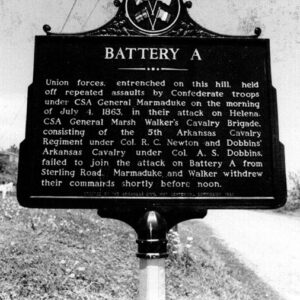 Battery A Marker
Battery A Marker  Battery B Location
Battery B Location  Battery B Marker
Battery B Marker  Battery C
Battery C  Battery C Cannon
Battery C Cannon 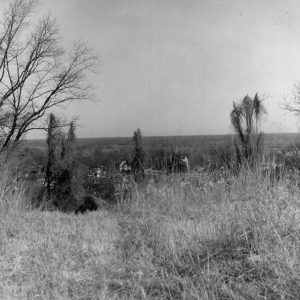 Battery C Location
Battery C Location 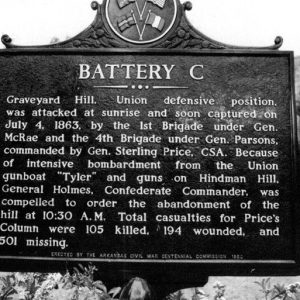 Battery C Marker
Battery C Marker 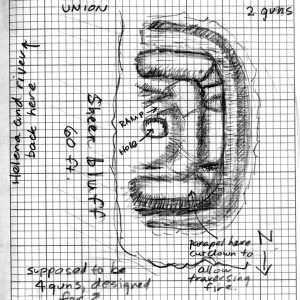 Battery D
Battery D  Battery D Location
Battery D Location 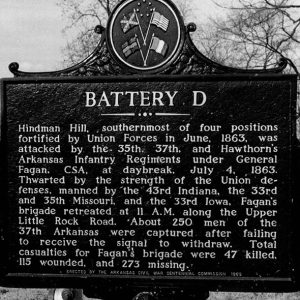 Battery D Marker
Battery D Marker 




Comments
No comments on this entry yet.